Motorcycle tour of Belize 2013
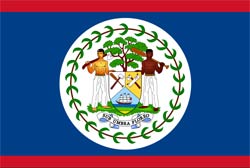 In October of 2013 I went to Belize with the idea to settle down there for a few years. I thought it sounded nice since it is in the tropics and the official language is English. It's a small country with only 340,000 people, and land is still cheap to buy, even virgin forest can be found.
In October of 2013 I went to Belize with the idea to settle down there for a few years. I thought it sounded nice since it is in the tropics and the official language is English. It's a small country with only 340,000 people, and land is still cheap to buy, even virgin forest can be found.
The population is mostly Mestizo, with big Kriol groups, and some Native Americans. The western parts have big communities of Mennonites, very much resembling the Amish in the US. They have succeeded well in agriculture and trade. Along the coastline are the black Garifunas.
I flew in to Belize City and took a taxi to San Ignacio, up in the mountains near the western border to Guatemala. I kept this as my base as I explored the rest of the country, staying at Tia Maria's hotel.
Below: The main intersection in San Ignacio.
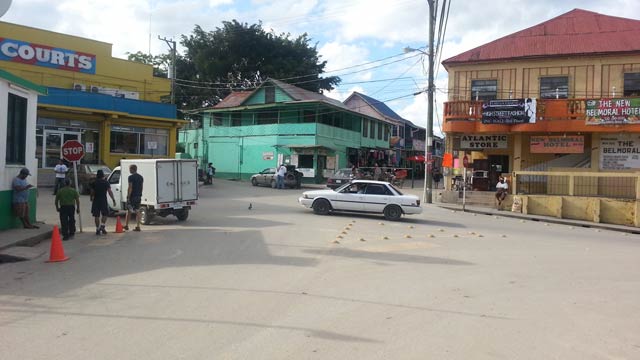
Below: Burns Avenue, the tourism hot spot of San Ignacio.
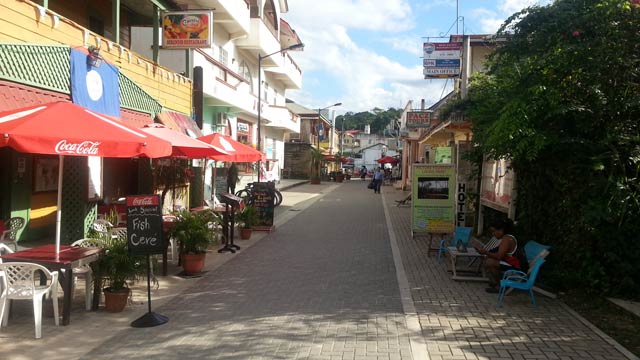
Below: Tia Maria's hotel on the second floor of the Plaza del Rio mall.
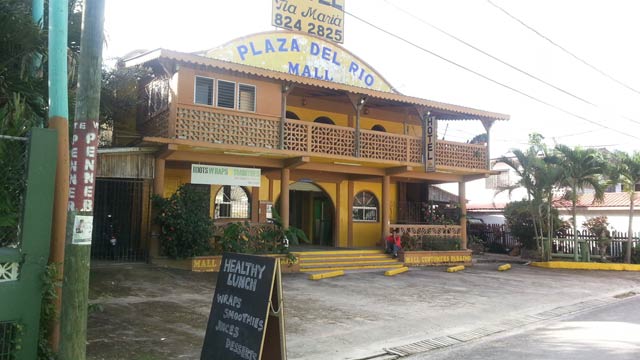
Impressions of Belize
The climate of Belize is really rough. Living in the tropics for so many years I thought I was used to hot and humid, but this is on its own level. You avoid being in the sun at all costs, and you constantly feel sticky from all the sweat and damp clothes that never dry up.
In Belize there is a strange mix of people and ethnicities that seemingly get along, perhaps because they mostly stick to their own group. A small Chinese minority own most of the convenience stores and many of the restaurants. The Mennonites produce all grains and milk. Around half the people are black and the other half are Mestizo/Latino.
It is a poor country and this is evident by the standard of roads and houses. With the exception of Belize City, there are no real cities, only smaller villages with local mom-and-pop-shops and weekly markets. Even the capital of Belmopan is just an over-sized village. It really feels like you are closing your mind and receive no mental stimulation in Belize.
I found San Ignacio by far to be the nicest village in the country. Belmopan is more spread out and does not feel as cozy. Belize City is ugly and has an unsafe feeling to it.
Belize really shines once you get into nature though. Tall majestic forests with mahogany trees, lots of Mayan temples and artifacts, and a beautiful Caribbean coast line.
Below: The Xunantunich Mayan temple, not far from San Ignacio.
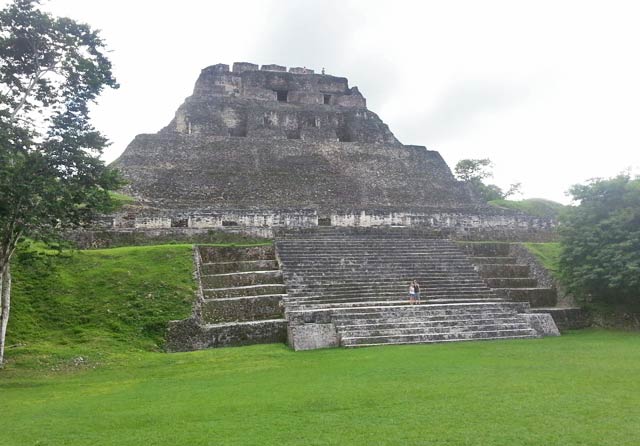
Land is cheap, around $500 to $1000 per acre of undeveloped farm land. If you want a nice view or ocean front, expect ten times that amount. I looked at several jungle parcels, and most of them were really nice. One that specifically stands out is a seven acre plot on top of a hill with majestic views of the valleys below.
Below: View from the seven acre plot my friend Saeed has for sale really captured my interest.
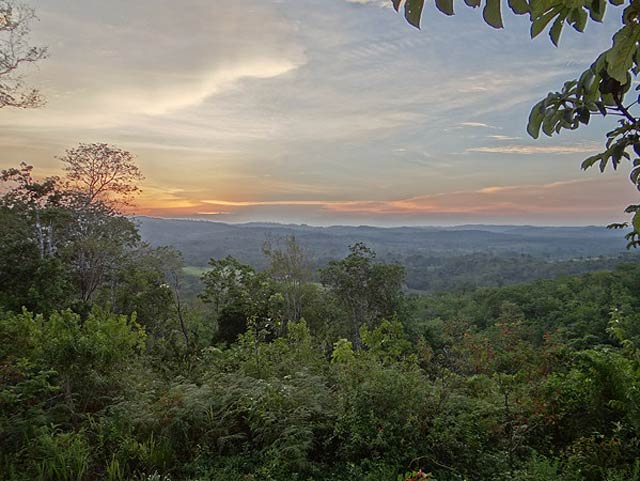
I met some very nice people in Belize, for example the family who ran the Tia Maria hotel, but equally many who just wanted to take advantage of me, and unfortunately some succeeded. It felt like a very backwards culture, primitive in many ways.
Below: George (to the left) and his brother were the sons of the Tia Maria manager lady. They were really nice and helpful to me.
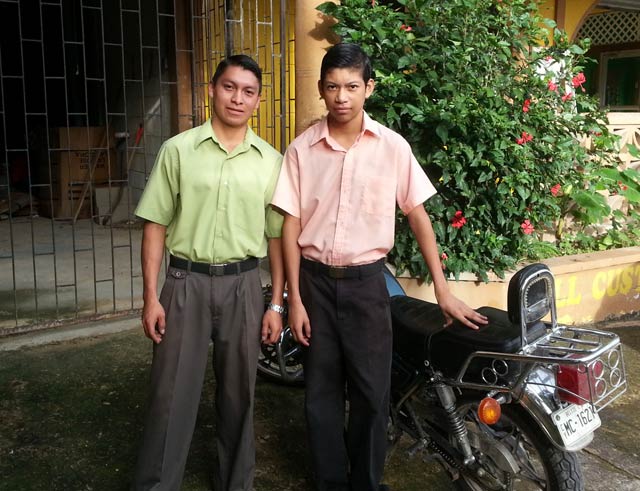
Prices were higher than in neighboring countries. For example 1 kg of tomatoes $3.30, loaf of full-grain bread $2.00, 30 eggs $4.50, local beer $1.50, local style lunch meal $3.50, premium gas per liter $1.52, basic hotel room with fan $20, nice hotel room with aircon $45. Imported goods are penalized with a hefty import tax, which makes them really expensive.
Food was pretty ok and somewhat better than the traditional Central/South American diet. I found the local "Rice and Beans" delicious and ate a lot of it. It's grilled chicken with rice cooked in coconut milk mixed with beans, served with potato salad and a fried plantain.
In the end I decided to not live in Belize. The combination of intolerable climate and undeveloped culture was too hard to ignore. In other similar countries there are at least a few big cities with more variety and more progressive people. An expat I met in Belize expressed it well: "Very few foreigners who come here end up staying long term. It is a rough place and certainly not for everyone."
Every small thing seemed difficult and backwards in Belize somehow. For example a simple thing like bringing money out of the country turned out to be a big hassle. If you make the mistake of sitting on too many Belize dollars, it will be difficult to leave the country. Banks can only legally exchange a small amount to US dollars, and they can not do standard wire transfers out of the country without you getting a special permit from the government.
Common items are also hard to find in Belize. I went to lots of shops in San Ignacio, Belmopan and Belize City to find a standard hiking backpack for my tour. Surprisingly it could not be found. I ended up with a simple low quality one, usually carried by school children.
Touring Belize
For the tour I got myself a nice motorcycle, a Honda Tornado, which is a simpler Brazilian made version of Honda XR250 (or CRF250 as it is called today). I paid $5,400 for it, which is really expensive and a good example of Belize's silly import tax levels. It turned out to be a good and reliable bike though.
Below: The Honda Tornado I toured on.
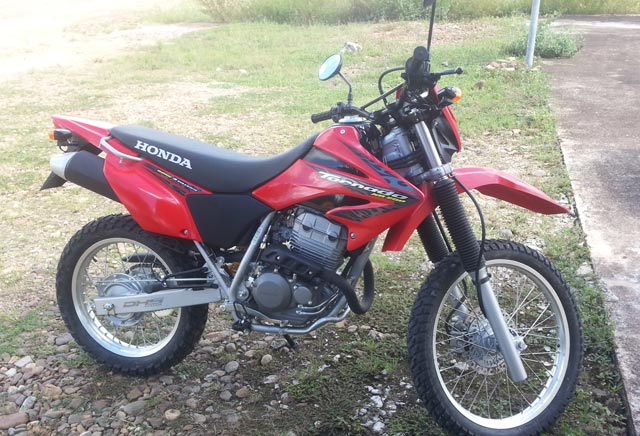
Below: Map of the tour. This was to get familiar with Belize, and to get warmed up for the next tour of Guatemala and El Salvador.

I started out the morning of October 25 and rode east from San Ignacio to Belmopan, then took the Hummingbird Highway south through some really nice hills. There were lots of orange plantations along the way to look at, but frequent rains killed some of my good spirit. Coming close to the coast, pine trees took over, with lots of swamps along the road.
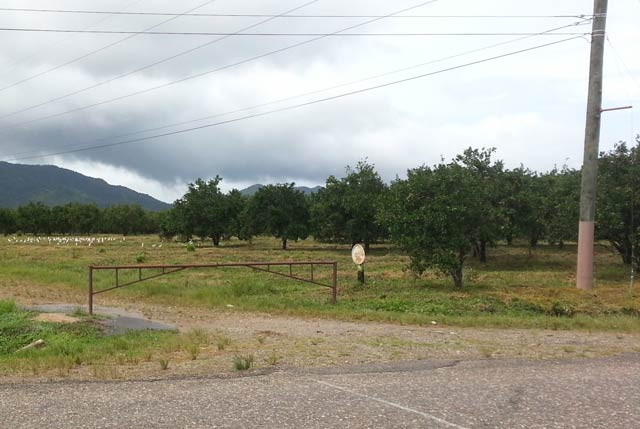
Above: Orange plantations among the hills. Below: Vultures feasting on road kill.
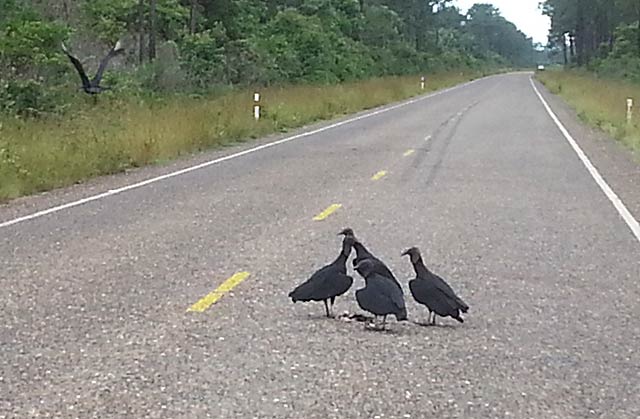
My target for the day, Placencia, was out on a really long sand bank, so the ride there was quite interesting. For half an hour I rode on a narrow piece of land with water on both sides. There were lots of houses along the way, and it looked attractive for tourism. Placencia turned out to be a cozy Caribbean hippie village with colorful houses, a nice pier and some welcoming restaurants. Among plenty of accommodation options, I selected a bungalow on the beach.
Below: The pier that opens up Placencia to Caribbean ocean journeys.
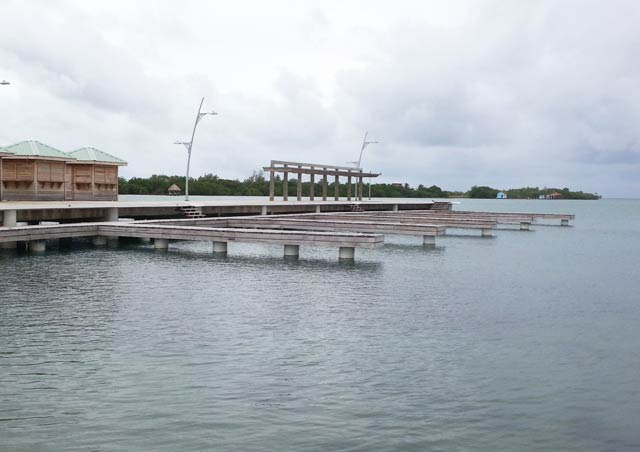
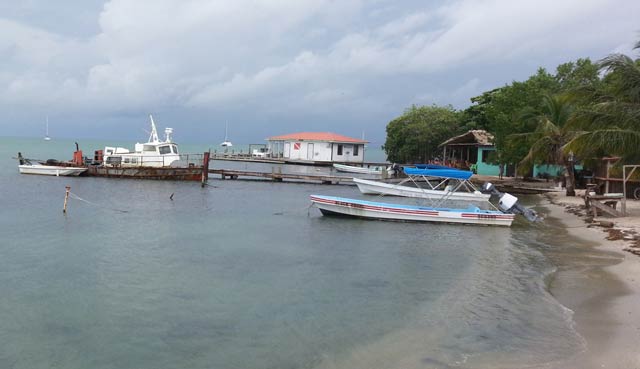
Above: Boats in Placencia. Below: Wendy's café.
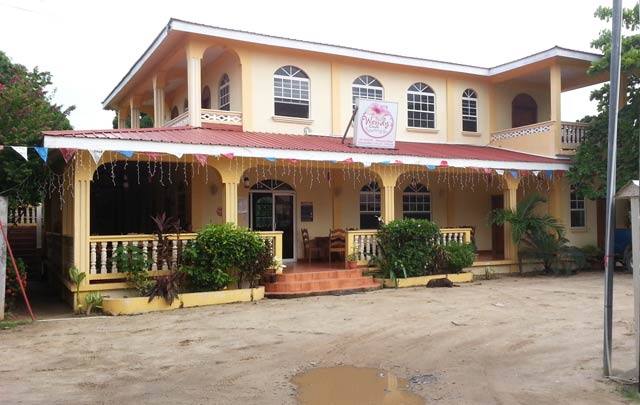
Next morning I headed back to the main road and then further south to see how far I could go. The road was in good quality, and villages were very far apart. I passed through some nice greenery, but it was in the end a pretty boring ride.
Below: The road going south.
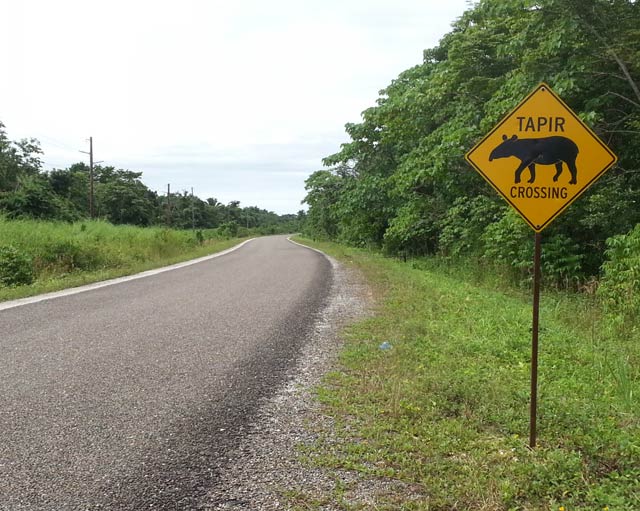
Eventually I hit Punta Gorda, the main village of Southern Belize, mostly inhabited by Garifunas. Since I have never cared for African culture, this was a very uninteresting place, and I itched to leave the next day.
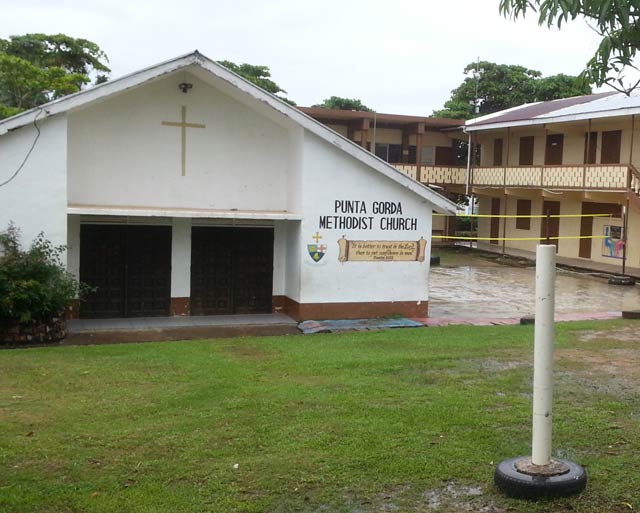
I drove all the way back up the coastline again, and late afternoon I was in Dangriga. It poured down heavy as I rode through the village in search for a hotel, and finally found one that took me in. An hour later it cleared up and I strolled around the streets. As with Punta Gorda, this was also a very unremarkable place. Nothing seemed to be going on here.
Below: The main street in Dangriga.
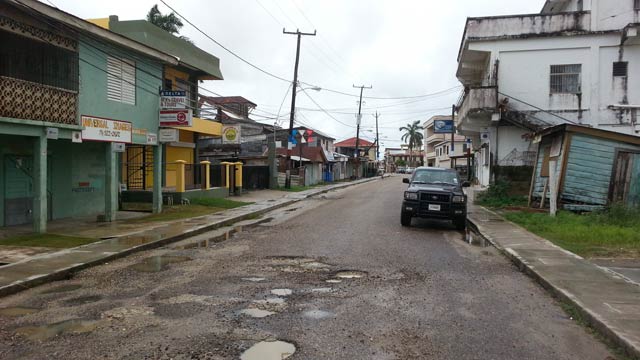
It was time to do the first 1000 km service on my bike at the dealership in Belize City. Early next morning I decided to take a chance with a shortcut to get there. Instead of going all the way up to Belmopan and then back to the coast again, I could continue north along the coast and reach Belize City. In theory. On the map it looked like a major road, however right after turning into to it I could see it was just a minor dirt road. People kept warning me that this road was not safe, being the site of robberies, so perhaps I should have stayed away.
Below: Forcing my way to Belize City I reached a crossing of a river on slippery wood planks.
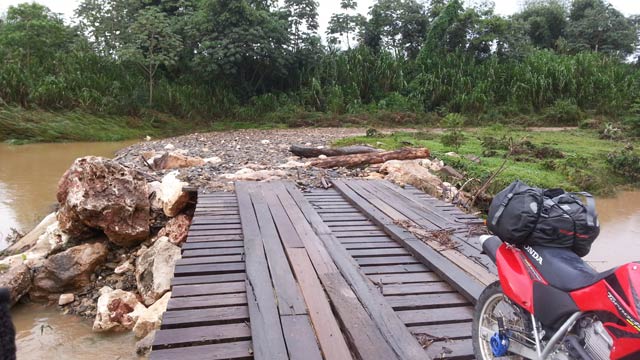
Below: Large stretches of road were flooded. Initially the water was fairly shallow, but as I continued it got deeper and deeper.
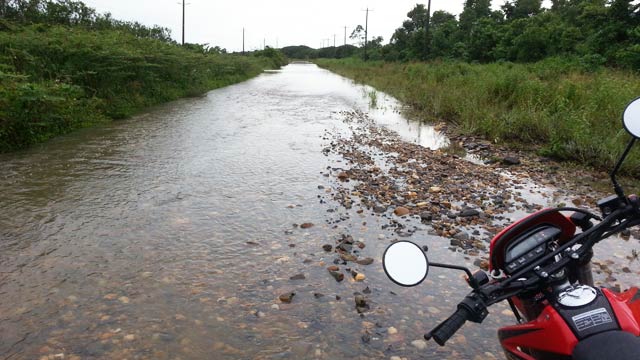
It was lonely out there on the road with very few houses or farms around. The road was mostly bordered by jungle and swamps, and there was a constant drizzle of rain. After riding for 30 minutes I became nervous about getting stuck and not being able to get back. Each flooded area got deeper and deeper, but so far I had managed to pass them.
I pushed on into the next flooded passage, and it got deep really fast. Suddenly the water level was up to the gas tank and the engine stopped abruptly. I turned the ignition on and the engine was completely dead. Shit! I got off the bike and stood up to my crotch in water. I slowly turned the bike around and started pushing it back to dry land.
A few hundred meters up the road I saw a vehicle parked at the side of the road, looking abandoned. I knocked on its door, and out came Marc Parez, a French guy who was touring the world in his custom built RV, made from an old military truck. The funny thing was that he also flooded his engine at this passage, and was now waiting for help along the road.
Marc had some good tools so we started taking apart the bike carburetor to clean out all the water. After an hour and a half the motor started up again, and I felt a huge relief.
Marc's vehicle was pretty cool, very much like a traditional RV inside, but on the really robust frame of a military transport truck. He had been on the road with it constantly for years, mostly in the Americas.
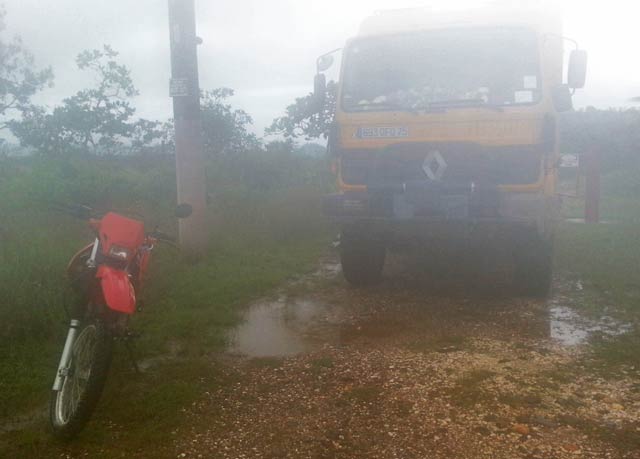
Marc had sent for help to come, and remained in his RV while I headed back to the main road. This time I was paranoid about getting stuck again, and manually walked the flooded areas to find the shallow spots before I rode them on the bike. I eventually got back to Belmopan. I was wet and tired, and immediately checked into a hotel to get some rest.
Next day I was in the Honda dealership for the now much needed maintenance. The shop mechanic told me I was lucky to have cleaned out the engine right away, and that it flooded with sweet water, not sea water, or the engine would have been bust.
The same evening I reached San Ignacio and took a few days of rest, preparing for the big adventure of Guatemala and El Salvador. Overall it was an interesting tour, but it rained most of the time and that of course made it a bit rough.
